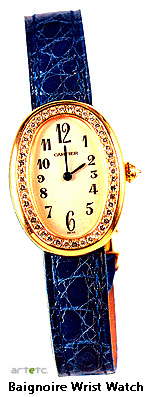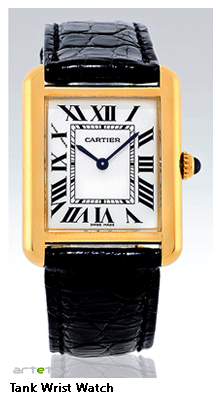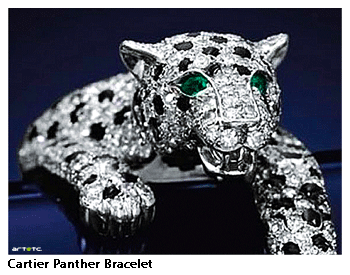- Editorial
- Shibu Natesan Speaks on Protest Art
- Rising Against Rambo: Political Posters Against US Aggression
- Transient Imageries and Protests (?)
- The Inner Voice
- Bhopal – A Third World Narrative of Pain and Protest
- Buddha to Brecht: The Unceasing Idiom of Protest
- In-between Protest and Art
- Humour at a Price: Cartoons of Politics and the Politics of Cartoons
- Fernando Botero's Grievous Depictions of Adversity at the Abu Ghraib
- Up Against the Wall
- Rage Against the Machine: Moments of Resistance in Contemporary Art
- Raoul Hausmann: The Dadaist Who Redefined the Idea of Protests
- When Saying is Protesting -
- Graffiti Art: The Emergence of Daku on Indian Streets
- State Britain: Mark Wallinger
- Bijon Chowdhury: Painting as Social Protest and Initiating an Identity
- A Black Friday and the Spirit of Sharmila: Protest Art of North East India
- Ratan Parimoo: Paintings from the 1950s
- Mahendra Pandya's Show 'Kshudhit Pashan'
- Stunning Detours of Foam and Latex Lynda Benglis at Thomas Dane Gallery, London
- An Inspired Melange
- Soaked in Tranquility
- National Museum of Art, Osaka A Subterranean Design
- Cartier: "Les Must de Cartier"
- Delfina Entrecanales – 25 Years to Build a Legend
- Engaging Caricatures and Satires at the Metropolitan Museum
- The Mesmerizing World of Japanese Storytelling
- The Metropolitan Museum of Art Exhibiting Lyrical Visions: Paintings from North India
- Random Strokes
- Asia Week at New York
- Virtue of the Virtual
- What Happened and What's Forthcoming
- Art Events Kolkata, March – April 2012
- Mumbai Art Sighting
- Art Bengaluru
- Delhi Dias
- Preview, April, 2012 – May, 2012
- In the News, April 2012
- Cover
ART news & views
Cartier: "Les Must de Cartier"
Issue No: 28 Month: 5 Year: 2012
by Anurima Sen
Heralded by the regnant Prince of Wales, Edward VII as a 'Joaillier des Rois, Roi des Joaillier', the proud and distinguished history of the Cartier aesthetics is as resplendent and extravagant as the literal translation of these famous words. Translating to 'Jeweller of the Kings, King of Jewellers', the Cartier line of watches, jewellery and luxury accessories have enthralled royalty and hoi-polloi alike, and has been celebrated all across the world as an insignia of high fashion. The label Cartier was a product of a celebrated lineage of fine craftsmanship, founded in Paris by Louis-Francois Cartier in 1847, who was then just an apprentice trying to make his own mark from within his master's study. In 1874, it was his son Alfred Cartier who took over the company and strove to make the Cartier establishment resonant with premium craftsmanship all over the world. However, it was when his sons Louis, Pierre and Jacques took over the company that Cartier S.A, in its modern avatar, was born.
While most reviewers and history-purists would credit Patek Phillipe, a celebrated luminary in the world of timekeepers in their own right, as the makers of the first wristwatch, it was Cartier's incredible design that made wristwatch usable. History has a way of attaching delightful little anecdotes to justify the regalia surrounding the true marvels of the ages, and the first Cartier wristwatch comes with its own quirky little slice of history. In 1904, the legendary Brazilian aviator Alberto Santos-Dumont wished aloud to his friend Louis Cartier that aviators could really do without the hassles of checking time in their pocket watches, while piloting. The cogs of innovation were set, resulting in arguably the world's first exclusive gents watch, endearingly (and might we say, enduringly) titled The Santos. Featuring a square bezel and a distinctive flat casing, this wristwatch not only won Santos-Dumont's approval, but also created a commercial legend.


1907 saw the merger of two of the most well-respected French names in the world of industrial aesthetics, with a company that brought together Cartier and Edward Jaeger (from the house of Jaeger-LeCoultre). By this time, Cartier had already established itself as a foreword in exclusive timekeeping and premier watches, with Cartier boutiques and branches set up in London, New York and St. Petersburg. Catering to an exceedingly exclusive list of clientele that included the royalty and their patronage from all over the world, as well as the celebrities of the age, Cartier established a list of flawlessly-calibrated movements in their signature lines of watches. 1912 saw Cartier coming out with the Baignoire (a word that roughly translates to “front-row”) and Tortue models, both of which are still available today and are seen as must-have collectibles. In 1917, Cartier took out their Tank model, homage to their extremely mechanized and utilitarian Santos model, designed by Louis Cartier himself. The Tank line borrowed the design aesthetics of the military Tanks deployed on the Western borders, and fused the very latest in timepiece-engineering in a watchcase that was just 4.75 mm in height.
The partnership finally blossomed into a proper company (with Edward Jaeger) top produce the movements for exclusive Cartier lines. While Cartier still had other famous manufacturers like Vacheron Constantin, Movado and Piguet who supplied movements to the Cartier lines, the partnership with Edward Jaeger paved the way for Cartier to become a global powerhouse in timekeeping. Since then, the Cartier exclusive line of timepieces have included the legendary models Calibre de Cartier, Pasha de Cartier, the Santos de Cartier and the models Baignoire and Tonneau.
The Endorsements that Matter
 From its inception, the Cartier brand name and a definite pre-occupation with the life and times of the royalty had been a given statement. Indeed, no other premium timekeepers have been able to catch the collective fascination of a group so used to the lifestyle of resplendence as Cartier, and accolades and certifications have poured in. As early as in 1856, Princess Mathilde, the niece of Napoleon I, became a proud endorsee of the Cartier line of Jeweliery - a tradition furthered by Empress Eugenie in 1859, who also became a proud endorser of the Cartier line. In 1900, Cartier introduced their range platinum jewellery - a breathtaking array of designs adhering to the neoclassical aesthetic, mounted on the enduring platinum frame. A far cry from the emphatic golden tints of jewellery, this line instantly became a favourite with the aristocrats of the day. In 1906, Cartier moved towards incorporating another timeless tradition in the world of high art, this time experimenting with the Art Deco style. Cartier became the first jewellery house to incorporate the Art Deco style in its creations, with bold and absurd lines and geometric variations. An immediate favourite, this year proved particularly successful for Cartier as it also introduced the line of Tonneau wristwatches that has endured to this day. Cartier also has the proud distinction of being appointed as the official purveyors to an exhaustive list of royalty from the world over, including King Carlos I of Portugal, Tsar Nicholas II of Russia, King Peter I of Serbia, Edward VII of the English Royal Family and King Alfonso XIII of Spain, to name just a few. In fact, Edward VII was said to have been so enamoured by Cartier's design aesthetics that he ordered 27 tiaras from Cartier in 1902, to commemorate his coronation.
From its inception, the Cartier brand name and a definite pre-occupation with the life and times of the royalty had been a given statement. Indeed, no other premium timekeepers have been able to catch the collective fascination of a group so used to the lifestyle of resplendence as Cartier, and accolades and certifications have poured in. As early as in 1856, Princess Mathilde, the niece of Napoleon I, became a proud endorsee of the Cartier line of Jeweliery - a tradition furthered by Empress Eugenie in 1859, who also became a proud endorser of the Cartier line. In 1900, Cartier introduced their range platinum jewellery - a breathtaking array of designs adhering to the neoclassical aesthetic, mounted on the enduring platinum frame. A far cry from the emphatic golden tints of jewellery, this line instantly became a favourite with the aristocrats of the day. In 1906, Cartier moved towards incorporating another timeless tradition in the world of high art, this time experimenting with the Art Deco style. Cartier became the first jewellery house to incorporate the Art Deco style in its creations, with bold and absurd lines and geometric variations. An immediate favourite, this year proved particularly successful for Cartier as it also introduced the line of Tonneau wristwatches that has endured to this day. Cartier also has the proud distinction of being appointed as the official purveyors to an exhaustive list of royalty from the world over, including King Carlos I of Portugal, Tsar Nicholas II of Russia, King Peter I of Serbia, Edward VII of the English Royal Family and King Alfonso XIII of Spain, to name just a few. In fact, Edward VII was said to have been so enamoured by Cartier's design aesthetics that he ordered 27 tiaras from Cartier in 1902, to commemorate his coronation.
Famous Auctions
While Cartier is a go-to name for the royalty, it also represents the highest aspirations to grandeur on the part of those who don't have royal affiliations. Cartier wristwatches, jewellery and timepieces are dearly sought-after pieces of exclusive importance in most auctions. In 2010, the nephrite Cartier Grande Sonnerie was the highlight of an auction event at Patrizzi & Co., New York. Previously owned by the family of New York's youngest mayor, Hugh L. Grant, this exquisitely crafted platinum Tank watch had a pre-sale estimate of $80, 000 to $100,000. 2010 proved to be a great year for Cartier auctions, as another lot, that belonging to the late King Edward VII, caused a great amount of anticipation and frenzy among collectors. The icing on the proceedings was an onyx and diamond-crafted panther bracelet, called The Panther, which fetched a dizzying 4.5 million pounds ($7 million). Carved to perfection by Jeanne Toussaint, this was one of the highest single sales recorded at any Sotheby's auction, and just goes on to show the effect Cartier collectibles can still have on the market. From a different lot in 2010, but also designed by Jeanne Toussaint, Sotheby's also saw a Cartier Flamingo brooch, encrusted with rubies, sapphires, emeralds, diamonds and citrines, fetched a massive $2.65 million. Apart from the signature jewellery, other Cartier lines (including their iconic 'Love' bangles) have also proven to be extremely sought-after pieces of collectibles, going at estimates of over $5000 for single pieces (Sotheby's Australia) for the bangles and $70,000 for bracelets (emerald and diamond, lot 292/Sale 2544 at Christies).
 One of the most iconic phases of the Cartier design happened when Jacques Cartier traveled to India in 1911, and struck by the exquisite beauty of the Oriental craftsmanship in the Maharaja's emeralds, he came up with a way to infuse that Eastern extravagance into staid European craftsmanship. Lot 536, listed at Sotheby's, features a rare gem from this era the hallowed Tutti-Frutti bracelet from 1928. The Tutti-Frutti was one of Cartier's most prized design lines, richly inlaid with emeralds, diamonds and rubies, and this lot was pegged at an estimated price of $200,000 to $300,000 at the Sotheby's auction. Also from the lineage of the Tutti-Frutti jewels, lot 533 featured a platinum and diamond pendant necklace that was listed with Sotheby's for $500,000 to $700, 000. Another noted aspect of these Cartier jewels is their use of Rubies, and more specifically, Rubies sourced from the erstwhile Burma, at a time when very few jewellery houses were using them.
One of the most iconic phases of the Cartier design happened when Jacques Cartier traveled to India in 1911, and struck by the exquisite beauty of the Oriental craftsmanship in the Maharaja's emeralds, he came up with a way to infuse that Eastern extravagance into staid European craftsmanship. Lot 536, listed at Sotheby's, features a rare gem from this era the hallowed Tutti-Frutti bracelet from 1928. The Tutti-Frutti was one of Cartier's most prized design lines, richly inlaid with emeralds, diamonds and rubies, and this lot was pegged at an estimated price of $200,000 to $300,000 at the Sotheby's auction. Also from the lineage of the Tutti-Frutti jewels, lot 533 featured a platinum and diamond pendant necklace that was listed with Sotheby's for $500,000 to $700, 000. Another noted aspect of these Cartier jewels is their use of Rubies, and more specifically, Rubies sourced from the erstwhile Burma, at a time when very few jewellery houses were using them.
While most houses have branched out their interests, Cartier remains fastidiously old-school about their collections, and hence retains a timeless, classic appeal with its patrons. With a list of clientele from luxuriant principalities in princely states in India, to the Mediterranean regimes of Spain and Portugal to the empires of France and England, Cartier truly justifies its tag of being the 'Jewellers to the Kings'. Added to its lineage is its utility of producing the world's first functional wristwatch that braves even the most trying conditions, and you could sum up Cartier's contribution to the world of timekeeping and jewellery in perhaps these often-repeated words- a true timekeeper's luxury.